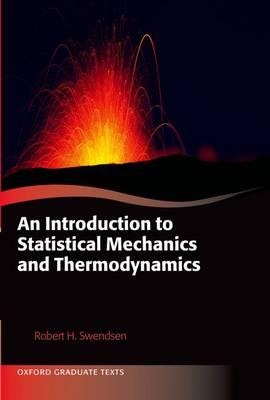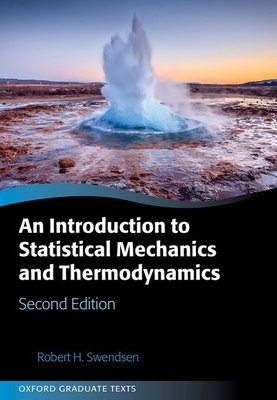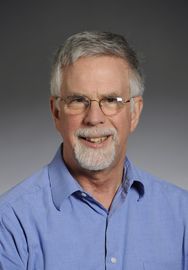
Textbook

Our 2020 textbook:
I will again be using the textbook "An Introduction to Statistical Mechanics and Thermodynamics" by Robert H. Swendsen, but this has now come out in a second edition. Unfortunately, the book will not yet be available for sale until probably February so we will have to start with the first edition. But do not fret, there's a plan:
First, the two editions are similar enough so that transitioning is smooth. And you can even stick with the first edition for the entire semester. Moreover, there is no need to buy the first edition (cover image: see left), since as a CMU student you have free online access to the book via this link:
Swendsen book online, first edition.
If you wish to buy the phyical book (you know, the hard copy version, printed on real paper!) then I recommend to wait for the second edition, which as the following data (and a cover that looks like the image on the right):
An Introduction to Statistical Mechanics and Thermodynamics
Oxford University Press, 2 edition (February 10, 2020)
ISBN-13: 978-0198853237
Robert H. Swendsen
Both editions of the textbook present the two complementary aspects of thermal physics as an integrated theory of the properties of matter. Conceptual understanding is promoted by thorough development of basic concepts. In contrast to many texts, statistical mechanics, including discussion of the required probability theory, is presented first. This provides a statistical foundation for the concept of entropy, which is central to thermal physics. A unique feature of the book is the development of entropy based on Boltzmann's 1877 definition; this avoids contradictions or ad hoc corrections found in other texts. Detailed fundamentals provide a natural grounding for advanced topics, such as black-body radiation and quantum gases.
Table of Contents (The first edition from 2012)
| Preface | |
| 1. | Introduction |
| Part I: Entropy | |
| 2. | The Classical Ideal Gas |
| 3. | Discrete Probability Theory |
| 4. | The Classical Ideal Gas: Configurational Entropy |
| 5. | Continuous Random Numbers |
| 6. | The Classical Ideal Gas: Energy Dependence of Entropy |
| 7. | Classical Gases: Ideal and Otherwise |
| 8. | Temperature, Pressure, Chemical Potential, and All That |
| Part II: Thermodynamics | |
| 9. | The Postulates and Laws of Thermodynamics |
| 10. | Perturbations of Thermodynamic State Functions |
| 11. | Thermodynamic Processes |
| 12. | Thermodynamic Potentials |
| 13. | The Consequences of Extensivity |
| 14. | Thermodynamic Identities |
| 15. | Extremum Principles |
| 16. | Stability Conditions |
| 17. | Phase Transitions |
| 18. | The Nernst Postulate: The Third Law of Thermodynamics |
| Part III: Classical Statistical Mechanics | |
| 19. | Ensembles in Classical Statistical Mechanics |
| 20. | Classical Ensembles: Grand and Otherwise |
| 21. | Irreversibility |
| Part IV: Quantum Statistical Mechanics | |
| 22. | Quantum Ensembles |
| 23. | Quantum Canonical Ensemble |
| 24. | Black-Body Radiation |
| 25. | The Harmonic Solid |
| 26. | Ideal Quantum Gases |
| 27. | Bose-Einstein Statistics |
| 28. | Fermi-Dirac Statistics |
| 29. | Insulators and Semiconductors |
| 30. | Phase Transitions and the Ising Model |


Robert Swendsen, author of our Textbook. Not the lecturer, I'm afraid.
You have to do with Deserno.